KERALA
Tropical rematch
The name Kerala derives from "kera" and "alam" respectively which in Malayalam means "tree of coconuts" and "earth". Definitely a traveler who goes to Kerala for the first time will not fail to note that the coconut trees are present on almost all its territory, a presence that was immediately noticed and put to use even by the Portuguese after their arrival, starting a large marketing of coconuts and a subsequent production of its derivatives.But the coconut palm is not the only wealth of the country and to give a closer look at the Kerala must leave no doubt of its main resource: water. Kerala, with its network of navigable canals, the backwaters, is the Indian state with the largest amount of water. Always the backwater for communication between the different cities of the coast and some interior settlements, encouraging the exchange of goods and contributing to the development of the cities that lie along their course. Surfing on the backwater at the slow pace of the ferry engines, leads to meditate. The colorful boats and gondolas with the hull, hand-sewn fishermen of Kerala, the Andhra Orissa people or people who came from far driven by the abundance of fish of the waters, sailing constantly on the canals and along the coasts of the Indian Ocean. The fishing net, fishing nets imported Chinese several centuries ago, adorn with their slim profile the banks of the canals and beaches. Not a few, however, are the risks of running the delicate natural ecosystem of the backwater. A floating aquatic plant belonging to the family of "deriaceae", the Eichhornia Crassipes, also known as water hyacinth, proliferation and floats on the surface of the channels to prevent or make it very difficult to navigate. Progress also presents his account. The shipyards for the construction of bridges and buildings open along the waterways, are inevitably leading to a rapid and steady increase in pollution. In the south of the country, to build the giant hotels Kovalam have been deforested large areas previously occupied by palm trees, with the predictable result of increasing tourist accommodation and the rate of local employment but irreparably damage the ecosystem of the coast. In Varkala, a few km north of Trivandrum, the administrative capital of Kerala, every year during the monsoon rains, the only extension of the present high costs throughout the country is subject to landslides because of unregulated urbanization Hotel that has not kept count of excessive proximity to the coast and its constant natural erosion. But paradoxically, opposite the town of Ernakulam, industrial capital and operational center of overtaking economic Kerala, in a bay crossed by huge cargo ships and islands populated by fate thanks to the material removed during the construction of the port and connected by a bustle Continuous boats, extends over a peninsula Fort Kochin, the city that more than any other in Kerala retains the vestiges of the colonial past. Fort Kochin is charming, and those who love the atmosphere in which living religions and political movements elsewhere in contrast, can only feel attraction and interest. The brightly colored houses of the fishermen, the Catholic churches of Portuguese origin, in the past, Protestant and Anglican with the succession of the Germans and the British, the headquarters of the union of the port and the Communist Party Marxist, where a giant poster of Che Guevara on the wall welcomes those who go in the morning to read the newspaper offered free by the party, the evening stroll along the beach where the fishermen by force of arms hoist nets hung enormous barbells, are the images of a city far away from the crowded and noisy cities of the states of central and northern parts of the Indian sub-continent. In the early hours of the morning is easy to breed buses accompanying children to school while in ports, ferries sail to bring the Indian youth to work. The schooling rate is among the highest in India and unemployment is low. Many young Indians from Kerala, graduate school of computer science, providing skilled labor to the laboratories of Bangalore. Women, who in the mountain villages and coastal resorts are still used in hard construction work, Kochin here to enjoy more social guarantees and elsewhere. The Marxist Communist Party, which has ruled the country for thirty years for popolar free will, seems to have found the key to give Kerala an economic and political stability than elsewhere in India still seems to be a mirage. The peaceful coexistence of various religious rites present in Kochin and the rest of Kerala, can be considered as an example for the entire Indian sub-continent, where instead increasingly religious fundamentalism and political feeding manifestations of intolerance and terrorism. The numerous religious institutions in the city, provide education and contribute their presence to even out the differences between the different social classes, and the most obvious cracks elsewhere because of strong contrasts. The phenomenon of forced conversions to Catholicism, to which the Hindu extremist groups have placed their formal veto, is nothing more than the attempt of those who belong to the lowest castes to ensure a better future for themselves and their children.Mass tourism in Kerala than anywhere else moves on roads traced by international tour operators, Fort Kochin steps aside and makes way for travelers seeking cultural stimuli and healthy. The places where the practice of the ancient Ayurvedic medicine therapies are scattered all over Kerala. Clinical detoxification centers for massage, places to practice yoga, meditation and discuss Eastern philosophy, represent a goal that you can hardly ignore once you are in Kerala. Numerous cultural centers of Fort Kochin offer every evening performances of Kathakali, the ancient Indian dance that arranges the texts taken from the mythological stories from the Ramayana and the Mahabharata. Usually, the show itself is preceded by the step of make-up that is open to the public, offers the viewer the chance to closely observe the procedure to achieve the colors of makeup that actors apply on the face, mixing and reducing dust, minerals, bark of some trees, flowers and spices. The symbolism of the movements of the face of the actors is explained before each performance. At Fort Kochin, along the roads leading to the Jewish quarter, where merchants heirs of the diaspora than two thousand years ago in Palestine displaying the Star of David out of their shops, it is easy to run into huge blocks with carpets of spices exposed to the rays of the sun. These are the companies where they find work, many women of Kerala, where you select and mix the ingredients of pickles, peppers pickled cucumbers on display on the shelves of every self-respecting indian-shop.But there is another spice that symbolizes the economic stability of Kerala tea. Who goes first Munnar town built at 1500 m. high in one of the most beautiful mountain scenery of South India, can not escape the skyline that offer endless tea plantations of the Tata Group. After years of labor struggles and wildcat strikes, women laborers, who plunged to her waist in the bushes of the tea leaves collect at a time very mature, have been recognized Holding company taking an active part in the economic choices of the vertices. Kerala is facing, therefore the change taking place across the Indian continent with courage and perseverance, and although it is not protected from environmental changes that require progress, is a likely candidate on the list of those few places where the political and religious tolerance have created the basis for social development marked by a growing widespread prosperity.
Tropical rematch
The name Kerala derives from "kera" and "alam" respectively which in Malayalam means "tree of coconuts" and "earth". Definitely a traveler who goes to Kerala for the first time will not fail to note that the coconut trees are present on almost all its territory, a presence that was immediately noticed and put to use even by the Portuguese after their arrival, starting a large marketing of coconuts and a subsequent production of its derivatives.But the coconut palm is not the only wealth of the country and to give a closer look at the Kerala must leave no doubt of its main resource: water. Kerala, with its network of navigable canals, the backwaters, is the Indian state with the largest amount of water. Always the backwater for communication between the different cities of the coast and some interior settlements, encouraging the exchange of goods and contributing to the development of the cities that lie along their course. Surfing on the backwater at the slow pace of the ferry engines, leads to meditate. The colorful boats and gondolas with the hull, hand-sewn fishermen of Kerala, the Andhra Orissa people or people who came from far driven by the abundance of fish of the waters, sailing constantly on the canals and along the coasts of the Indian Ocean. The fishing net, fishing nets imported Chinese several centuries ago, adorn with their slim profile the banks of the canals and beaches. Not a few, however, are the risks of running the delicate natural ecosystem of the backwater. A floating aquatic plant belonging to the family of "deriaceae", the Eichhornia Crassipes, also known as water hyacinth, proliferation and floats on the surface of the channels to prevent or make it very difficult to navigate. Progress also presents his account. The shipyards for the construction of bridges and buildings open along the waterways, are inevitably leading to a rapid and steady increase in pollution. In the south of the country, to build the giant hotels Kovalam have been deforested large areas previously occupied by palm trees, with the predictable result of increasing tourist accommodation and the rate of local employment but irreparably damage the ecosystem of the coast. In Varkala, a few km north of Trivandrum, the administrative capital of Kerala, every year during the monsoon rains, the only extension of the present high costs throughout the country is subject to landslides because of unregulated urbanization Hotel that has not kept count of excessive proximity to the coast and its constant natural erosion. But paradoxically, opposite the town of Ernakulam, industrial capital and operational center of overtaking economic Kerala, in a bay crossed by huge cargo ships and islands populated by fate thanks to the material removed during the construction of the port and connected by a bustle Continuous boats, extends over a peninsula Fort Kochin, the city that more than any other in Kerala retains the vestiges of the colonial past. Fort Kochin is charming, and those who love the atmosphere in which living religions and political movements elsewhere in contrast, can only feel attraction and interest. The brightly colored houses of the fishermen, the Catholic churches of Portuguese origin, in the past, Protestant and Anglican with the succession of the Germans and the British, the headquarters of the union of the port and the Communist Party Marxist, where a giant poster of Che Guevara on the wall welcomes those who go in the morning to read the newspaper offered free by the party, the evening stroll along the beach where the fishermen by force of arms hoist nets hung enormous barbells, are the images of a city far away from the crowded and noisy cities of the states of central and northern parts of the Indian sub-continent. In the early hours of the morning is easy to breed buses accompanying children to school while in ports, ferries sail to bring the Indian youth to work. The schooling rate is among the highest in India and unemployment is low. Many young Indians from Kerala, graduate school of computer science, providing skilled labor to the laboratories of Bangalore. Women, who in the mountain villages and coastal resorts are still used in hard construction work, Kochin here to enjoy more social guarantees and elsewhere. The Marxist Communist Party, which has ruled the country for thirty years for popolar free will, seems to have found the key to give Kerala an economic and political stability than elsewhere in India still seems to be a mirage. The peaceful coexistence of various religious rites present in Kochin and the rest of Kerala, can be considered as an example for the entire Indian sub-continent, where instead increasingly religious fundamentalism and political feeding manifestations of intolerance and terrorism. The numerous religious institutions in the city, provide education and contribute their presence to even out the differences between the different social classes, and the most obvious cracks elsewhere because of strong contrasts. The phenomenon of forced conversions to Catholicism, to which the Hindu extremist groups have placed their formal veto, is nothing more than the attempt of those who belong to the lowest castes to ensure a better future for themselves and their children.Mass tourism in Kerala than anywhere else moves on roads traced by international tour operators, Fort Kochin steps aside and makes way for travelers seeking cultural stimuli and healthy. The places where the practice of the ancient Ayurvedic medicine therapies are scattered all over Kerala. Clinical detoxification centers for massage, places to practice yoga, meditation and discuss Eastern philosophy, represent a goal that you can hardly ignore once you are in Kerala. Numerous cultural centers of Fort Kochin offer every evening performances of Kathakali, the ancient Indian dance that arranges the texts taken from the mythological stories from the Ramayana and the Mahabharata. Usually, the show itself is preceded by the step of make-up that is open to the public, offers the viewer the chance to closely observe the procedure to achieve the colors of makeup that actors apply on the face, mixing and reducing dust, minerals, bark of some trees, flowers and spices. The symbolism of the movements of the face of the actors is explained before each performance. At Fort Kochin, along the roads leading to the Jewish quarter, where merchants heirs of the diaspora than two thousand years ago in Palestine displaying the Star of David out of their shops, it is easy to run into huge blocks with carpets of spices exposed to the rays of the sun. These are the companies where they find work, many women of Kerala, where you select and mix the ingredients of pickles, peppers pickled cucumbers on display on the shelves of every self-respecting indian-shop.But there is another spice that symbolizes the economic stability of Kerala tea. Who goes first Munnar town built at 1500 m. high in one of the most beautiful mountain scenery of South India, can not escape the skyline that offer endless tea plantations of the Tata Group. After years of labor struggles and wildcat strikes, women laborers, who plunged to her waist in the bushes of the tea leaves collect at a time very mature, have been recognized Holding company taking an active part in the economic choices of the vertices. Kerala is facing, therefore the change taking place across the Indian continent with courage and perseverance, and although it is not protected from environmental changes that require progress, is a likely candidate on the list of those few places where the political and religious tolerance have created the basis for social development marked by a growing widespread prosperity.
ALLEPPEY
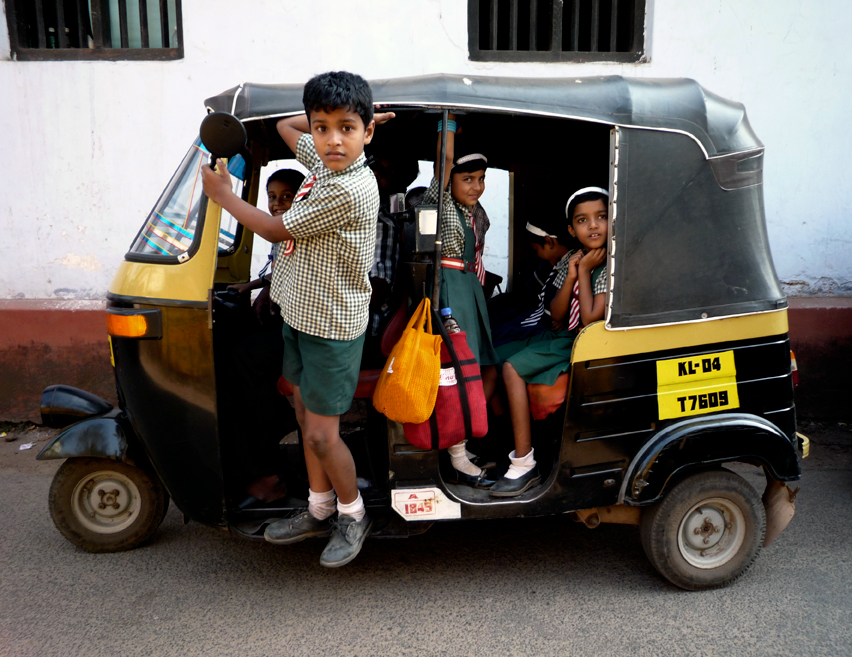
Alleppey, children on a tuc tuc leaving school

Evening meeting during the election campaign

Red flags along the streets of Alleppey
BACKWATER

Tourist resort on an artificial island along the backwater

Fishing net

The facade of a church emerges among the tops of the coconut trees along the backwater

Navigation in the backwater

Backwater, you navigate in views between the floating leaves

Along the canals of the backwater is easy to see the colorful boats of the fishermen of Kerala

The new bridges under construction take the place of old fishing nets

afternoon rest

The ferry that connects Allepey to Kottayam is forced to navigate long distances between the floating leaves of Eichhornia Crassipes, also known as "water hyacinth".

Five women walking on the embankment of a canal
FORT KOCHIN
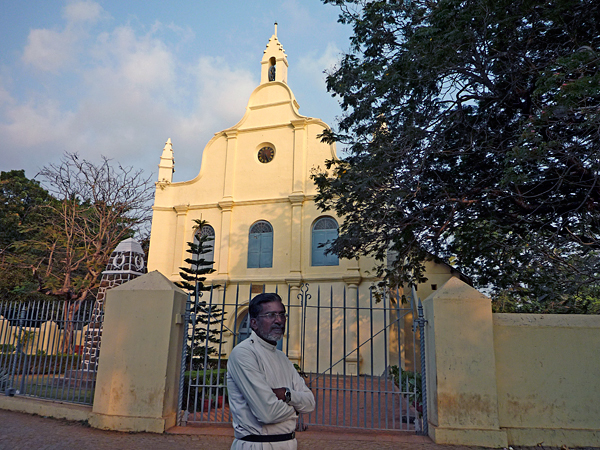
A monk in front of the church of S. Francis of Assisi

A cargo ship in the harbor of Ernakulam navigate in front the fishing-net of Kochin

The effigy of Pinarayi Vijayan, leader of the Communist Party Marxist, exhibited at an intersection in the center of Kochin

Carpets of ginger placed to dry in the sun
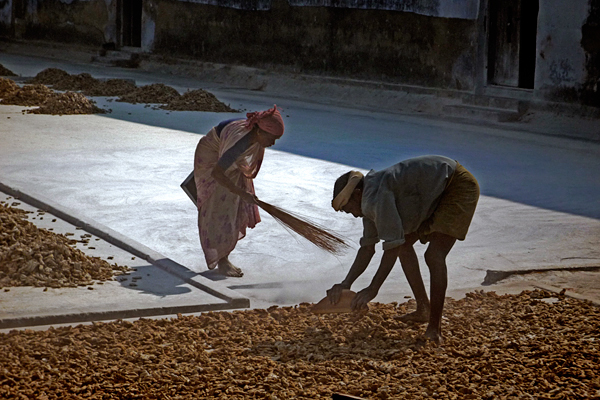
Carpets of ginger placed to dry in the sun

A seller of sacred images

The giant poster of Che Guevara in the headquarters of the Communist Party Marxist Fort Kochin
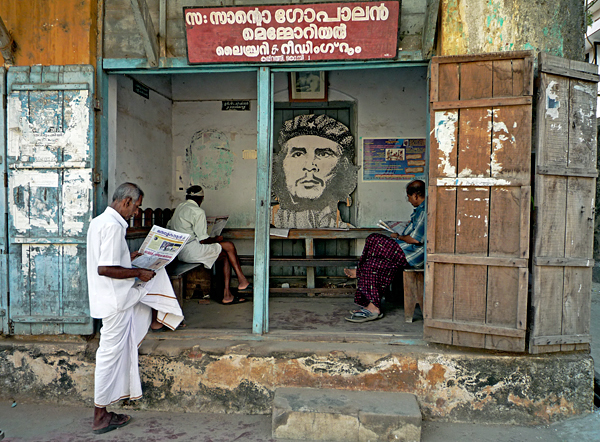
On the morning the party members read the newspaper in front of the headquarters of the Communist Party Marxist in Fort Kochin

Manifestation of the Marxist Communist Party of Fort Kochi during the election campaign of 2009

Manifestation of the Marxist Communist Party of Fort Kochi during the election campaign of 2009

The make-up of the actors before the show of Katakali

The make-up of the actors before the show of Katakali

Representation of Katakali
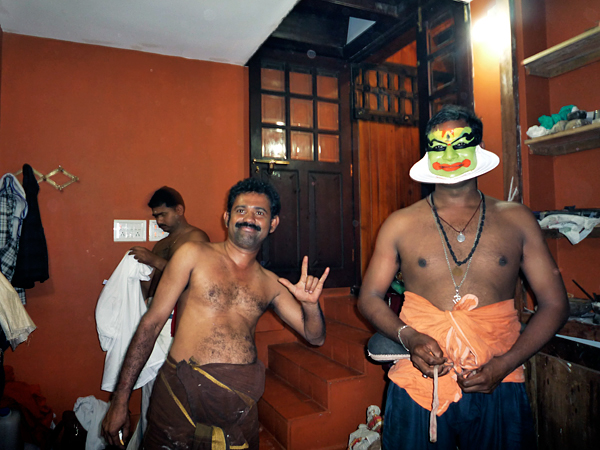
The actors in the dressing room after the performance of Katakali

The colorful houses of the fishermen of the island of Vypeen

The colorful houses of the fishermen of the island of Vypeen

Ragazzo sulla spiaggia dell’isola di Vypeen

The Jewish merchants exhibiting the Star of David in front of their shops
KOTTAYAM

At the end of a day's work

One of the voices of the economy of Kerala is the production of rubber
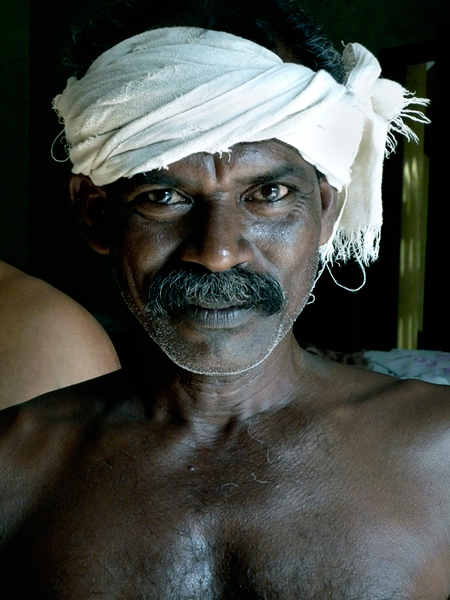
portrait

In some rural areas the use of the water river replaces the potable water
MUNNAR

Sky-line of Munnar

Two girls at the exit of the Cathedral of Munnar

The tea plantations are found in most of the skyline of Munnar

Women, immersed to her waist between the hedges of tea, collecting one by one the leaves mature now

Coconuts
PERYAR

A woman standing in front of a reproduction of the Pieta

Women of the Catholic faith ina church

The wax figure of Michael Jackson in the first private museum of Kerala

Kerala produces one of the best qualities of cardamom in the world

Cardamom before being shipped is meticulously hand selected

Cardamom before being shipped is meticulously hand selected

The nature reserve Peryar
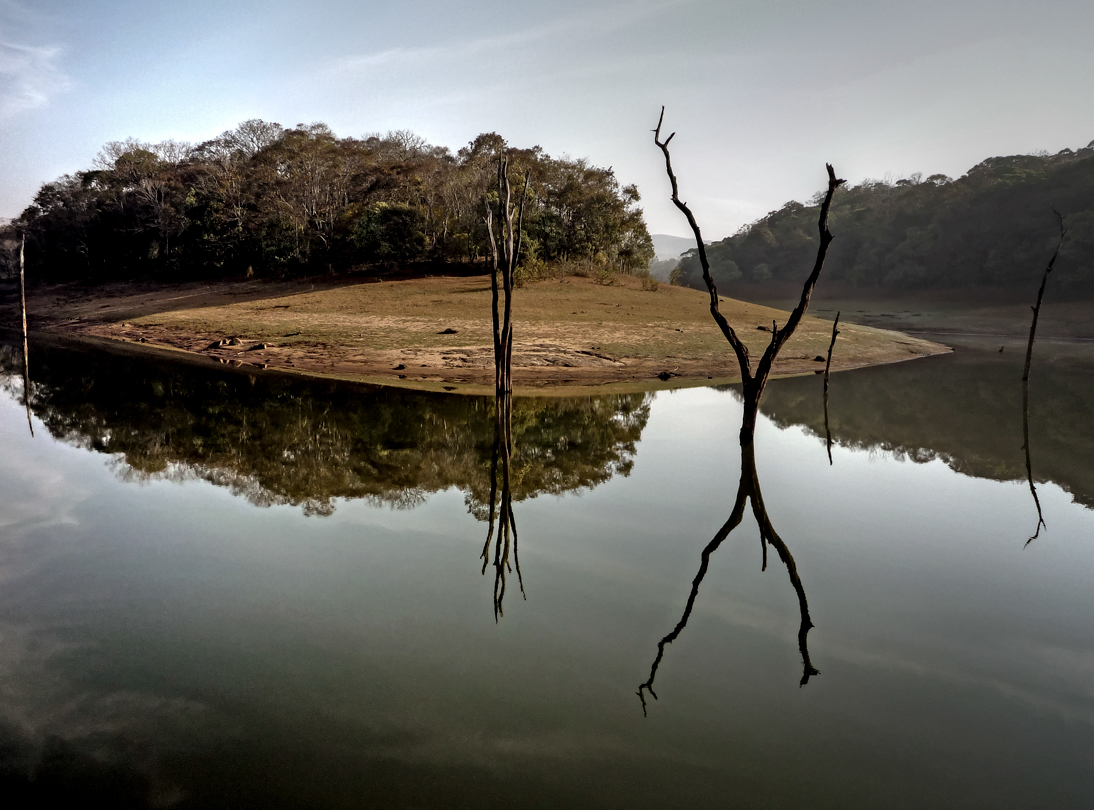
The nature reserve Peryar

The nature reserve Peryar
QUILON

Faithful in prayer at the Church of Our Lady of Velamkanni

A child plays in the garbage on a beach in Quilon

Two women working at the sewing machine
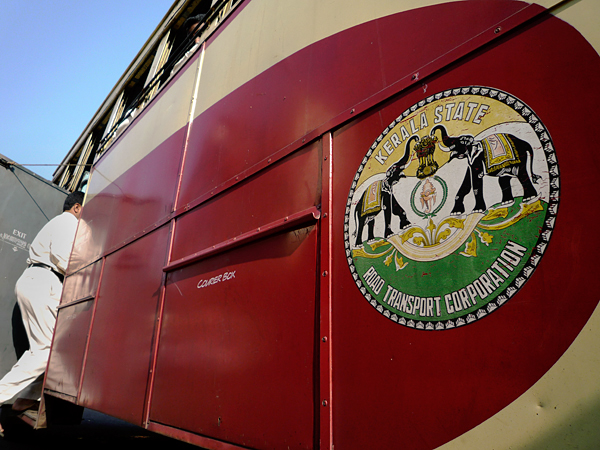
The logo of the public transport

A mural with an advertisement for men's clothing

The canoes are the best way to navigate the labyrinth of backwater channels
VARKALA

At dawn the fishermen extend nets to dry before you fold it back inside the boat

The planks of the hull of the fishing boats are secured to each other using a fiber obtained from the rind of the coconut

A breeder carefully washes the mantle of his woolly lambs

The nets left to dry occupy the entire area of a beach in Varkala

To transport nets to the boats are required several men

A Mosque near Varkala

On "Papanasam", the main beach of Varkala, practicing yoga at sunset

Fisherman intent to sew his fishing net

The hands of a fisherman sew the fishing net in the light of the early morning hours

A woman walks in the light of dawn in the palm of Varkala

